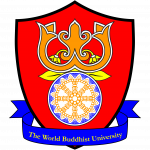
Chinese Buddhist Writing
A line-by-line, character-by-character introduction to the art of reading ancient, Buddhist Chinese, this expansive course covers everything from the fundamentals to epigraphy and the esoteric texts.
Table of Contents
- What is Chinese Buddhist Writing?
- Introduction
- Prerequisites
- Textbooks
- Volume 1: Foundations
- Volume 2: The Indian Tradition
- Volume 3: Texts Composed in China
- Continuing Study
- Advanced Courses
What is Chinese Buddhist Writing?
Starting with haphazard translations of Indian Sutras and culminating in majestic works of literature and philosophy, texts written in Chinese characters have long been crucial to the development of Buddhism in China—and by extension all of East Asia.
But Sanskrit and Pali are very different languages from Chinese. Chinese is not inflected, largely monosyllabic and has a vastly different phonology and cosmology. This made the job of translating Indian Sutras into Chinese writing very difficult, and thus makes our job decyphering their work just as tricky.
But, just as translating the Buddha’s words into Chinese enriched Chinese society, so too do the Chinese Buddhist Texts enrich ours when translated into English.
Introduction
This course teaches you how to read Buddhist texts in Chinese.
Note that this course is still a work in progress by its author, John Kieschnick. The copy presented here is up-to-date as of December 2020, but you should check out Professor Kieschnick’s original webpage to be sure you get the latest materials.
Prerequisites
While this course is primarily intended for English speakers with prior knowledge of Mandarin, it is designed to be (with the help of supplemental materials listed below) accessible to any student with time and courage.
For a quick introduction to how Indian Buddhist Texts were translated into Chinese, see: Translation, Transcription, and What Else?: Some Basic Characteristics of Chinese Buddhist Translation as a Cultural Contact between India and China, with Special Reference to Sanskrit ārya and Chinese shèng – Toru Funayama(.pdf)
